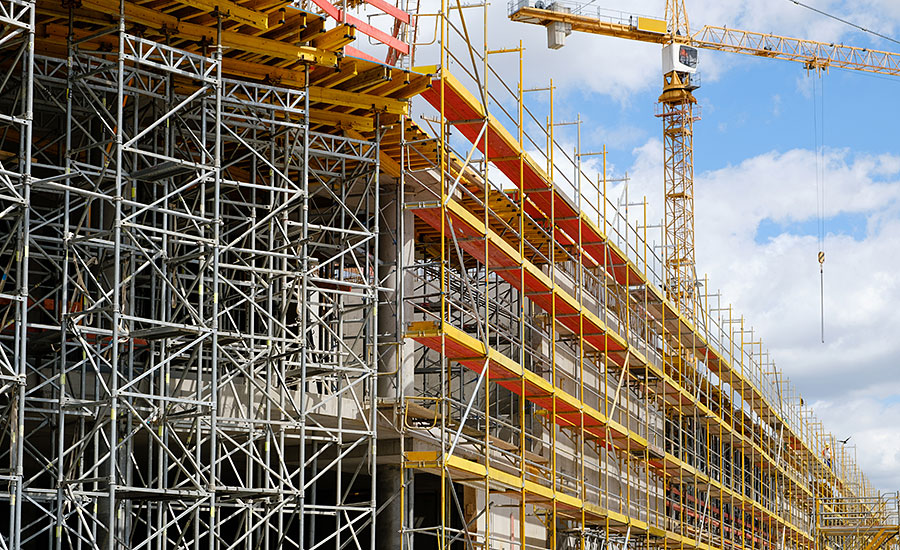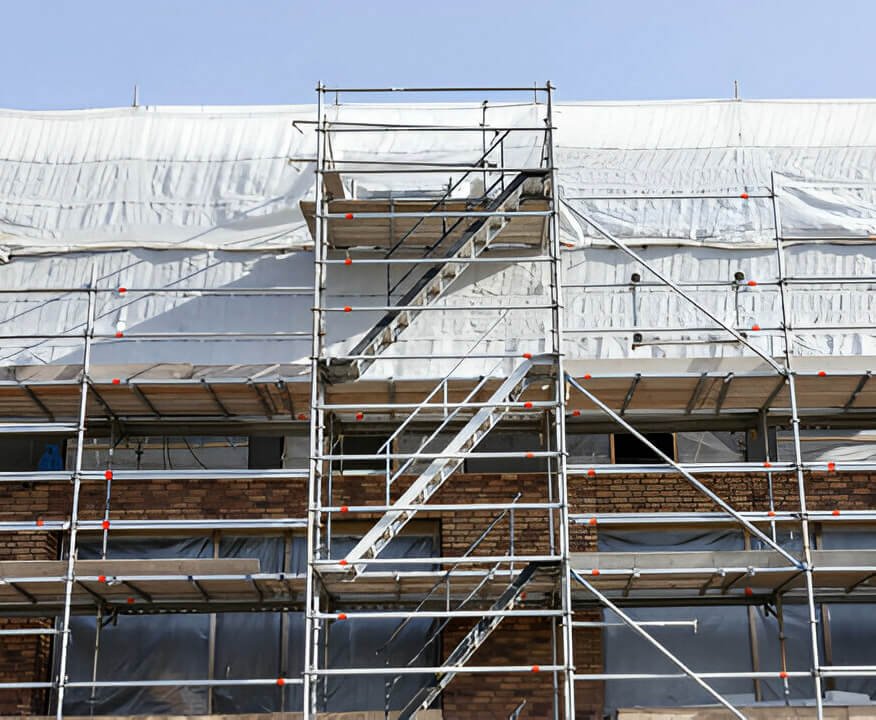Checking Out the Different Kinds Of Scaffolding Utilized in Building And Construction Projects
The building and construction sector relies heavily on different types of scaffolding to meet particular task needs, each offering unique benefits and applications. Typical frame scaffolding offers a tough structure for general jobs, while put on hold scaffolding is necessary for work on high-rise structures.

Conventional Framework Scaffolding
Traditional framework scaffolding is among the most extensively used methods in the construction market due to its effectiveness and convenience. This system is composed of straight and vertical frames that are assembled to create a secure platform for workers and materials. The major components include vertical posts, straight ledgers, and angled dental braces, which together provide a strong structure that can support significant lots.
One of the essential benefits of conventional frame scaffolding is its flexibility to numerous building jobs, ranging from domestic structures to large commercial frameworks. The modular layout permits very easy setting up and disassembly, making it reliable for both short-term and long-term jobs. Furthermore, the system can be personalized in height and width, suiting various structure designs and site conditions.
Security is critical in scaffolding applications, and traditional frame systems are equipped with guardrails and toe boards to stop drops and ensure worker security. Regular evaluations and adherence to security laws are critical in maintaining the integrity of the scaffold (Scaffolding). In general, traditional framework scaffolding stays a fundamental option in the construction market, supplying a dependable system for labor and improving overall job performance

Suspended Scaffolding
Suspended scaffolding provides a special solution for construction projects that need access to elevated surface areas, specifically in scenarios where typical structure scaffolding might be impractical. This type of scaffolding is commonly suspended from the roofing or top levels of a structure, using a system of ropes, wheels, and platforms to create a working area that can be adapted to numerous elevations.
One of the primary advantages of suspended scaffolding is its versatility. It can be conveniently rearranged or decreased to suit changes in construction requirements, making it excellent for jobs such as home window installment, frontage job, and maintenance on skyscrapers. Furthermore, the marginal footprint of suspended scaffolding allows for better use of ground space in urban environments, where space is frequently restricted.
Safety and security is an important consideration in the use of put on hold scaffolding. In general, suspended scaffolding gives a effective and reliable service for accessing hard-to-reach areas in numerous building scenarios, boosting both productivity and safety and security on website.
System Scaffolding
System scaffolding, frequently considered as a modern-day option in the scaffolding industry, contains pre-engineered components that can be rapidly put together and adapted for numerous building and construction jobs. Scaffolding. This type of scaffolding is characterized by its modular style, which permits for adaptability and efficiency on task websites, fitting different elevations and structural demands
Normally made from high-strength steel or aluminum, system scaffolding supplies enhanced toughness and stability. The elements include vertical articles, straight journals, and diagonal braces, which interconnect firmly, guaranteeing a durable framework. The style commonly incorporates standard installations, simplifying assembly and disassembly processes, therefore minimizing labor time and prices.

Rolling Scaffolding
Rolling scaffolding is a versatile choice to standard fixed scaffolding, designed for mobility and simplicity of use on building and construction websites. This sort of scaffolding contains a system supported by frameworks with wheels, enabling workers to conveniently move it as required. The movement feature considerably boosts efficiency, as it minimizes downtime related to setting up and disassembling dealt with scaffolding.
Commonly built from light-weight materials such as light weight aluminum or steel, rolling scaffolding provides a tough yet portable option for projects needing frequent repositioning - Scaffolding. It is especially useful in tasks such as paint, drywall setup, and electrical work, where accessibility to various heights and places is essential
Safety is vital in rolling scaffolding layout, with features such as locking wheels to stop unplanned movement when in use, and guardrails to safeguard employees from drops. In addition, many models are adjustable in height, fitting numerous task needs.
Cantilever Scaffolding

The design of cantilever scaffolding commonly includes using braces or arms secured to a building or framework, enabling the system to extend external safely. Security is paramount; hence, these scaffolds should be crafted to stand up to various loads and environmental problems. Routine inspection and maintenance are essential to make sure structural stability and employee safety.
Cantilever scaffolding is favored for its convenience and efficient use space, making it a prominent selection in urban atmospheres where room constraints prevail. It assists in less complicated access to high elevations, eventually contributing to the general performance of building and construction projects. As with all scaffolding types, appropriate training and adherence to safety and security criteria are critical for workers utilizing cantilever scaffolding.
Final Thought
Finally, the varied kinds of scaffolding made use of in building and construction tasks each offer distinctive objectives customized to details website needs. Traditional frame scaffolding provides stability, while put on hold scaffolding supplies convenience for raised jobs. System scaffolding promotes get more fast setting up, and rolling scaffolding improves movement for varying work environments. Cantilever scaffolding effectively attends to challenges in urban settings. Understanding these scaffolding kinds is crucial for maximizing security and efficiency in building, ultimately adding to the effective completion of projects.
Conventional structure scaffolding supplies a sturdy structure for general jobs, while suspended scaffolding is essential for job on high-rise frameworks.Rolling scaffolding is a functional option to traditional set scaffolding, designed for flexibility and ease of usage on construction websites. As blog here with all scaffolding types, appropriate training and adherence to safety requirements are crucial for employees utilizing cantilever scaffolding.
Typical framework scaffolding gives stability, while put on hold scaffolding offers adaptability for raised tasks. System scaffolding assists in fast assembly, and rolling scaffolding improves mobility for varying job environments.
Comments on “Expert Scaffolder Surrey Offering Customized Solutions for Your Needs”